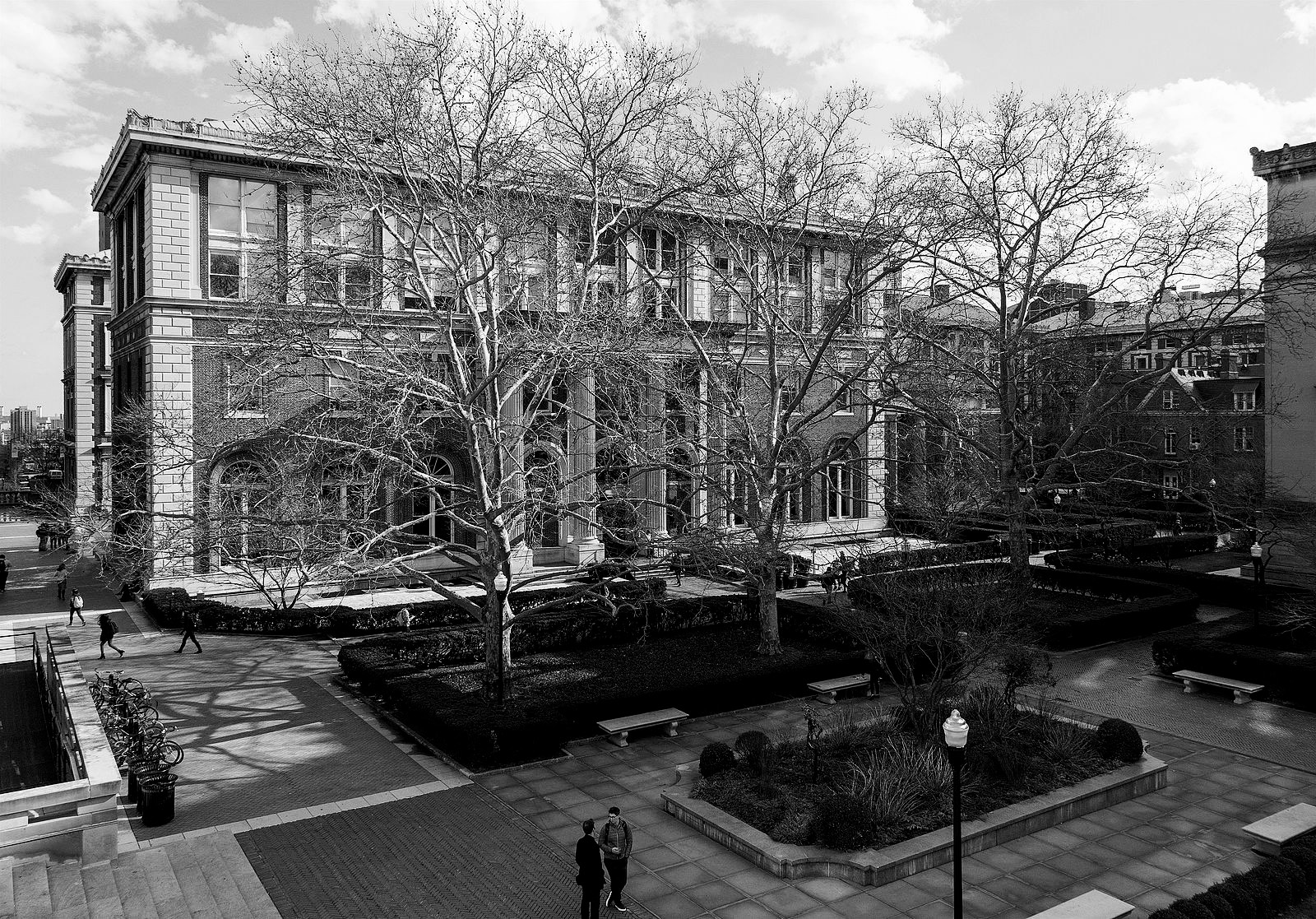The Rosa Parks of Architecture: Norma Merrick Sklarek
By R. Kofi Bempong
Explore the inspiring journey of Norma Merrick Sklarek, the 'Rosa Parks of architecture,' in this compelling narrative. From her early days in Harlem to becoming the first African American woman licensed as an architect in New York, Sklarek's story is one of resilience and brilliance.

In the sprawling narrative of American architecture, amidst its celebrated icons and towering structures, lies a story of resilience, brilliance, and pioneering spirit that reshaped the very foundation of the field. This is the story of Norma Merrick Sklarek, a woman whose name may not echo through the halls of history as loudly as some, but whose legacy is a testament to overcoming barriers with grace and determination. As we embark on a journey through her life, we encounter not just an architect but a visionary who paved the way for generations to come.
Imagine a young girl in the vibrant streets of Harlem, New York, in 1926. Daughter to Trinidadian immigrants, Norma was a beacon of curiosity and talent. Under her father’s guidance—a physician with a keen intellect—Norma’s fascination with building and design took root. Fueled by a family’s passion for knowledge, Norma Sklarek mastered drafting by age 12, a clear sign of her emerging talent. Her academic path took her to Columbia University’s School of Architecture, where she stood out not just for her skill but as a rare figure of diversity — one of the few women and the only African American in her class. In 1950, despite facing racial and gender biases, Norma graduated with her degree, ready and resolved to make a lasting impact in architecture.

However, the professional world Norma Merrick Sklarek stepped into was rife with challenges, mirroring the prevailing societal prejudices of the mid-20th century. Despite graduating from one of the country’s top universities, Sklarek struggled to find a job. Her race and gender became formidable barriers, with many architecture firms outright rejecting her applications, sometimes explicitly citing her identity as a black woman as the reason. These rejections were not merely personal slights but indicative of the systemic barriers and entrenched professional obstacles that minorities and women faced. In an era when the architecture field was overwhelmingly white and male, Sklarek’s experiences highlighted the broader societal norms and deeply ingrained prejudices. Yet, amidst this overt discrimination, the seeds of her future triumphs were being sown, setting the stage for her to break through these barriers in ways that would later redefine the profession.
With remarkable perseverance, she sought alternative avenues to forge her path in the architectural world. This quest led her to the City of New York’s Department of Public Works, where, although as a junior drafter, the role was not her envisioned position, it became a crucial stepping stone. Here, she honed her drafting and design skills and garnered a practical understanding of architectural and engineering projects, laying foundational expertise that would underpin her future achievements.
At the Department of Public Works, Sklarek worked on a variety of projects, including the design of alterations to public buildings and facilities. Her work ethic, talent, and dedication did not go unnoticed. She was able to build a solid foundation of professional experience and hone her skills in a real-world context. This period was crucial for Sklarek, not only for the technical and practical knowledge she gained but also for demonstrating her ability to work effectively in a challenging environment.
Sklarek’s persistence paid off when she passed the New York State Architectural Licensing exam in 1954, becoming the first African American woman to be licensed as an architect in New York. This achievement was a significant milestone for Sklarek and the architectural profession, challenging the status quo and opening doors for future generations of women and minority architects.

In 1959, Sklarek’s journey took her to Los Angeles, where she joined Gruen and Associates, marking the beginning of an era filled with landmark contributions to architecture. At Gruen, she played a pivotal role in the creation of iconic structures such as the California Mart and the Pacific Design Center, affectionately known as the “Blue Whale” for its distinctive color and massive size. Sklarek’s architectural prowess was not confined to commercial projects; she was instrumental in the development of the Fox Plaza in San Francisco, a testament to modern design principles, the United States Embassy in Tokyo, which exemplified cross-cultural architectural dialogue, and the renovation of Terminal 1 at Los Angeles International Airport (LAX), enhancing its functionality and aesthetic appeal. Each project not only displayed her exceptional skill in mastering the intricacies of design and construction management but also her innovative approach to solving architectural challenges, leaving an indelible mark on the landscapes she transformed.
In 1980, Sklarek’s career reached a defining milestone when she co-founded Siegel, Sklarek, Diamond, becoming the largest woman-owned architecture firm of its time. This groundbreaking venture was a testament not only to Sklarek’s architectural excellence but also to her entrepreneurial prowess and unwavering commitment to carving a path for women and minorities in a field traditionally dominated by white men. It was her role in challenging these norms and her pioneering achievements that earned her the nickname ‘the Rosa Parks of architecture.’ Like Parks, Sklarek’s actions spoke volumes, breaking down barriers and setting a precedent for future generations. The firm quickly became known for its innovative approach to design and its dedication to social responsibility, reflecting Sklarek’s personal ethos and her vision for a more inclusive architectural community. Through Siegel, Sklarek, Diamond, and her trailblazing career, Sklarek not only left an indelible mark on the landscape of American architecture but also on the social fabric, inspiring countless women and minorities to pursue their dreams in the architectural realm.

Norma Merrick Sklarek’s legacy transcends the iconic buildings she helped bring to life; it’s deeply embedded in the societal barriers she dismantled and the trails she blazed for future generations. More than just an architect, Sklarek was a beacon of inclusion, tirelessly advocating for the representation of women and minorities in the field. Her 1980 election as a Fellow of the American Institute of Architects is a glowing tribute to her unmatched contributions and pioneering spirit.
Sklarek’s impact on her professional community was characterized by her unwavering generosity and commitment to mentorship, particularly towards those who, like her, faced obstacles in their architectural journey. She leveraged her experiences to guide young architects, offering wisdom and encouragement that extended far beyond professional advice. Her home, often a gathering place for colleagues and mentees, symbolized the warmth and support that defined her mentorship style. Through these personal interactions, Sklarek not only shared her architectural knowledge but also nurtured the next generation’s growth and resilience.
Norma Merrick Sklarek’s story is a powerful testament to overcoming adversity through perseverance, talent, and dedication. Beyond her own remarkable achievements in architecture, she paved the way for future generations, challenging barriers related to gender, race, and background. Sklarek’s legacy is a source of inspiration, underscoring the importance of individual brilliance and collective efforts in advancing equality and inclusion. Reflecting on her life urges us to play our part in fostering a more inclusive, equitable world. Her enduring influence motivates us to challenge the status quo, advocating for a society where everyone can fulfill their potential. Thus, Sklarek’s journey is not only a historical narrative but also a call to action for us to continue her work towards excellence and justice.